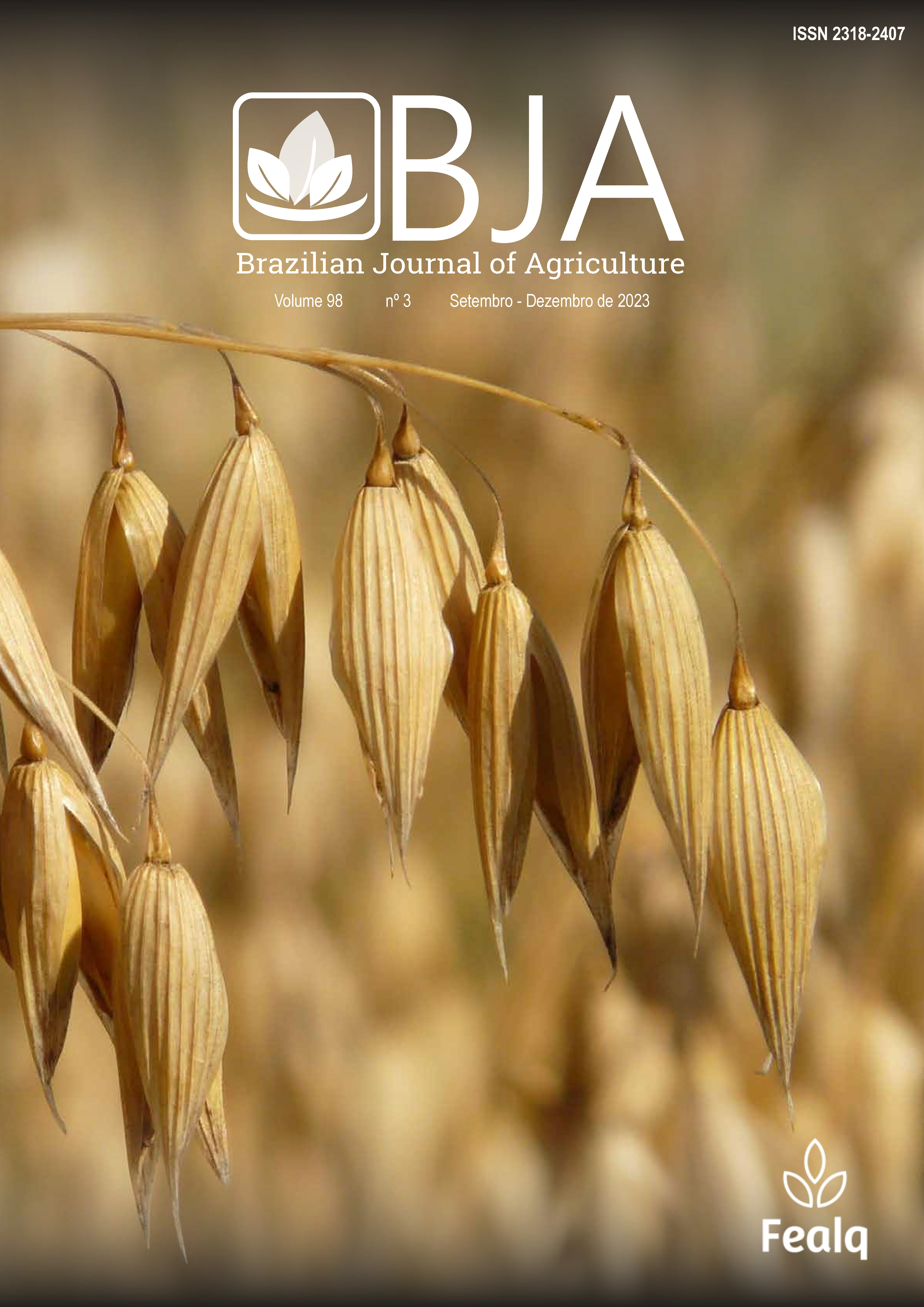DEVELOPMENT AND SELECTION OF WHITE OAT GENOTYPES FOR SUSTAINABLE ENVIRONMENTS
DOI:
https://doi.org/10.37856/bja.v98i3.4338Abstract
This work aimed to demonstrate the agronomic performance of the new white oat cultivar and to verify if it presents an ideotype for cultivation in sustainable environments. This study took place at Escola Fazenda Unijuí, located in the municipality of Augusto Pestana, in the northwest region of the state of Rio Grande do Sul. The experimental design used was randomized blocks, organized in a factorial scheme 4 white oat genotypes x 2 growing seasons (2021 and 2022). The genotypes used were a control cultivar (URS Taura), two parent cultivars (FAEM Barbarasul and FAEM Brisasul) and a candidate cultivar (URNRS22), arranged in four replications, totaling 32 experimental units. The analysis of variance at 5% probability by the F test was used. Tukey's mean comparison test was used to compare the means of the treatments. The dissimilarity matrix was calculated and multivariate selection indices were used to select genotypes with better agronomic performance. The candidate cultivar called URNRS 22 showed a superior response for panicle weight, number of grains per panicle, thousand grain weight and grain yield. Keywords: Avena sativa; Genetical diversity; Genetic Breeding; MGIDI.Downloads
Published
2024-01-02
How to Cite
PRADEBON, Leonardo Cesar; CARVALHO, Ivan Ricardo; DA SILVA, José Antonio Gonzalez; ROZA, João Antonio Dalla; LORO, Murilo Vieira; FERREIRA, Luiz Leonardo; SANGIOVO, Jaqueline Piasanti. DEVELOPMENT AND SELECTION OF WHITE OAT GENOTYPES FOR SUSTAINABLE ENVIRONMENTS. Brazilian Journal of Agriculture, Piracicaba, v. 98, n. 3, p. 142–158, 2024. DOI: 10.37856/bja.v98i3.4338. Disponível em: https://fealq.org.br/ojs/index.php/revistadeagricultura/article/view/4338. Acesso em: 18 dec. 2025.
Conference Proceedings Volume
Section
Artigos












